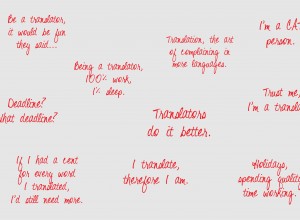
After years and years of listening to other people talk at memoQfest, having very interesting and insightful presentations, my time has come. It’s my turn now to stand in front and not be the one listening, but the one doing the talking.
It’s frightening and exhilarating at the same time. Just as the adrenaline you get from doing extreme sports.
So, what am I going to speak about? Well, it is memoQfest, and I do love memoQ, and I do think of myself as quite the tech-savvy guy, so, I think it’s easy to imagine the topic of my presentation. It’s all about tips and tricks, working more efficiently in memoQ, handling complex projects with memoQ and even using memoQ as a tool for things completely outside it’s realm of usability.
Below you will find a short description, a teaser of what my presentation will be about.
How many times did you receive a file that’s completely outside your comfort zone when dealing with it in memoQ? How many times did you get PDF files that you’re sure you’ll translate better/more efficient if you would have them imported in memoQ?
I love it when customers have everything set-up, nice and technical processes in place and clear instructions. But let’s be honest, that doesn’t happen that often. So, my presentation tries to offer you practical solutions for dealing with all the peculiar projects your customers may throw at you. More precisely, it will try to help you process your files better for translating them in memoQ.
Basically a list of tools, case studies, tips and tricks on how to handle specific documents in memoQ.
New ways of working with memoQ, all discovered thanks to our customer’s unusual requests.
More precise information
Tools
List of tools we use for translating files in memoQ more efficiently (e.g. AutoCad files, editable PDFs)
Case studies
- Using memoQ to find/identify translations for badly scanned PDFs – recurrent customer with such requests, identifying if we translated something similar and if it’s worth processing the file or send it out as it is. This might be old school, considering the year we’re in, but customers still send out scanned PDFs.
- Fashion website – translated content exported in XLS (lots and lots of HTML tags) – technical solutions + brief description
Tips and tricks
- Translated exported content from CMS, saved in XLS – a lot of problems with the CSV
- Handling PDF files in memoQ via Adobe InDesign
- Yes, there will be a bit of RegEx, but no long examples – just my point of view on this
- Bilingual/multilingual word/excel/etc. files in SOURCE / TARGET format (not a CAT tool bilingual file!)
- Classic request of updating a translation with track-changes, based on a source with track-changes
- Editable PDFs. How TOs. Should I simply throw it in memoQ?
- So you got the Adobe InDesign source. Hurray! But wait, is it really ok?
- Ever sent a bilingual memoQ file out and was surprised to find out you weren’t able to update it back in your project?
- Thousands and thousands of tags in a PowerPoint file imported in memoQ?
- Handle inconsistent translations better when doing a QA check. Glue them up in a view!
- Help your translators work faster (and better). Glossary + Muse = hugely improved efficiency.
Got you interested? Come and see me in action at this year’s memoQfest!
Conference program overview
https://www.memoq.com/en/memoqfest/conference-program
Registration




Lasă un răspuns